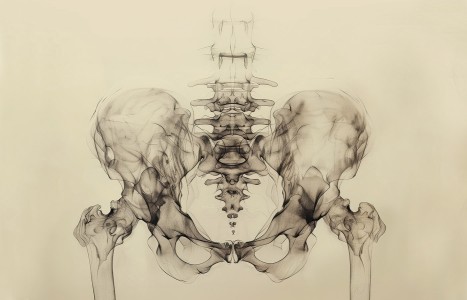People today want convenience, whether it be from their bank, credit card, favorite retail store, or restaurant. They demand it from the companies who hold their loyalty, including their health care providers (you). They don’t want to call and possibly be put on hold, and they want to use an app or schedule an appointment on your website. Here are three reasons your practice can gain by switching to online appointment scheduling.
Creating Child-Friendly Clinics with ABT
The Zurich Dojo was scattered with toy ducks, dolls, trains, exercise balls and teddy bears during my recent pediatric workshop. Participants, ABTs and LAcs, many of whom were also physical therapists and psychologists, were eager to gain fresh insights for their young clients. We had fun with the props.
Someone used a hand puppet shaped like a rubber duck to "gobble up" pain in an elbow joint and tap acu-points with its beak. Another used a little toy train to track along the UB meridians on either side of the spine, stopping at relevant Shu Points "to let the bad guys out." We also applied colorful stickers and dots to acu-points, pretending we were planting seeds for flowers or fruit ("kiwi fruit here, mangos there...). Offering a child a choice of stickers of faces with happy, sad, angry, frightened or frowning expressions can be very revealing, especially for kids who can't always articulate their pain.
Working with children takes a multi-disciplinary approach. This requires a freewheeling imagination, flexibility and adaptability to the instant needs of each child. ABT and fun qi exercises and imagery works wonders with kids who may be needle shy, or have run the gamut of MDs and hospitalization. ABT can be equally helpful for children who have seemingly inexplicable aches and pains or problems they don't like to discuss with parents, teachers or physicians. Often they share these problems with a therapist in the most unexpected moments.
Patient Examples
How vividly I recall nine-year-old Lucy.* I saw her just briefly on my travels, as a favor for a chiropractic friend who was running late. I knew little about Lucy except she suffered from stress incontinence. Her parents had dragged her to top pediatricians and urologists in the city - to no avail. In desperation, they sought complementary therapies.
All I did was sit opposite Lucy on the floor for some fun UB /Qi stretches pretending we were rowing a canoe along a lake. Quite spontaneously she told me her parents were having problems. When they argued violently at night, her mother often came to sleep in the room Lucy shared with a younger sister, Becky. After the session, I glanced in the waiting room and sensed the chaos in the mother's expression - restless body language. Later, I asked my chiropractor friend if family problems had been noted in Lucy's paperwork. To my astonishment – the answer was no. I shared my observations and advised my chiropractor friend to explore the root of Lucy's dilemma and suggest the parents seek marriage counseling instead of projecting their problems onto their kids.
In another example, Danny's* mother brought him to me because he suffered from chronic constipation. No amount of skillful dietary improvements helped. I chatted with Danny about school and family life. Without any prompting, he told me how difficult it was in the morning to have private time in the bathroom because his older siblings kept banging on the door telling him to hurry up. The solution was an alarm clock so Danny could get up an hour before the rest of the family.
Child-Friendly Clinics
Working with children goes way beyond applying specific pediatric techniques. It's great creating a child-friendly environment with fun colors, textures, surfaces at different levels, play areas, large exercise balls and walls lined with silly cartoons or art work. Avoid white where possible as it freaks out kids who have experienced hospitalization. Soft, colorfully themed sheets work wonders for kids – of all ages. French-born pediatrician Michel Cohen of New York City designed and built his own jazzy Tribeca storefront practice. Water themes are reflected by wavy surfaces and circular fish tanks filled with colorful Koi. Dr Cohen lined one area with portholes for peeking through (or storing syringes). He even designed a bright orange entryway.1
At my Zurich workshop, I broke participants into groups to discuss the best, and the worst experiences they had personally as children, or observed in their own kids or young clients, around doctors, nurses and dentists. Using a flip chart, I tabulated the best and worst experiences. Interestingly, similar themes crop up in all my pediatric workshops in the U.S., Germany, Switzerland and Austria.
Among the best experiences, we listed practitioners who:
- Listen.
- Don't patronize - but treat young patients with respect.
- Give clear explanations.
- Prepare kids creatively for any painful procedure, and allow a parent to hold them – when appropriate.
- Pretend an injection – or a needle – is a humming bird collecting honey.
Among the worst experiences we listed practitioners who:
- Discuss a child's problems with parents or nurses as though the child isn't there or can't hear.
- Forcibly hold down a child for painful treatments - evoking anguished memories.
- Leave a child feeling fearful of intimate examinations performed without tact or sensitivity resulting in years of problems, especially around future issues of intimacy and trust.
- Use big words the child can't understand.
- Have cold, clumsy, dry hands.
We discussed all of the above as a group, learning lessons from our own past experiences as kids or current experiences through young clients, to increase our sensitivity in pediatrics – and especially – to observe body language and reactions.
Art as Diagnosis
During my Berlin workshop we taped large sheets of drawing paper on the mirrored walls and filled boxes with markers in brightly assorted colors. To demonstrate the value of allowing a child to express him or herself before a treatment, I invited two eight-year-old girls, Sabine and Felicitas, to the workshop. Both girls happen to be mixed race (German mothers, African fathers). While the rest of us did stretching exercises, I encouraged the girls to draw scenes of any past bout of illness, and how they recovered. The contrast between the two artworks was remarkable.
Sabine's experience of a tummy upset while on vacation in the Caribbean evolved into a group healing effort. She drew a picture of herself in bed in a bright room surrounded by her mother, young friends and a vivid collection of neighbors. One had dreadlocks, another held armfuls of healing herbs from her garden for soothing teas. Sabine didn't need much encouragement to describe who was who, and how each person helped her get better.
Felicitas' bout with flu in Berlin was a far more solitary experience. She drew herself, alone, a tiny face peeping over a blanket in a tiny bed. But her bedside table was stacked high with CDs. Felicitas told us about her love of music and how it helped to keep her company and comfort her when her mother worked away from home.
Imaginative Stretching
Later, I incorporated these very different experiences into the imagery I used while stretching and interacting with the girls. A client's past recollections of healing experiences give therapists clues and insights to help select appropriate imagery, stretches, remedies, and exercises for any current health challenges.
For Sabine, who was experiencing some minor muscular aches and pains when she joined the workshop, I used exercises related to her other positive experiences - like cycling. She lay on the futon and I placed the palms of my hands on the soles of her raised feet and we "pedaled" away – as if to visit all the people in her picture. I explained that this was a great way of activating energy, also, a super exercise for breathing problems. We varied the speed, height, left-and-right positions according to her special journey. This was also a useful way for me to check left/right imbalances, meridian and muscular strengths and weaknesses.
For Felicitas, I used qi stretches that reflected musical sounds. I stretched her legs close to the floor as we hummed low notes, high for the higher notes, quick movements for the fast notes and slower movements for the dreamier tunes. Again, it was interesting to see how sound and movement helped her relax and become more coordinated. Kids may be apprehensive about a therapy session, but will make a beeline for large and colorful exercise balls. This breaks the ice. And it doesn't take much persuasion to drape a child over a ball for stretching and movement to disperse stagnant qi.
Have Fun
Whatever the discipline, in Western or Asian medicine, there are many easy ways of incorporating other fun methods to captivate a child's imagination. Firstly – if the left side is injured, work the right side first, or vice versa. Energy moves bilaterally. Kids get it, especially when you explain that the strong side is helping the injured (or challenged) side. This is reassuring, it activates energy, encourages deep breathing, and reduces pain.
Incorporating imagery in stretching is simple – and very effective. Let's lean over sideways "like a banana," and lean in the opposite direction to create a "friend for the banana," a lovely way of releasing tight qi in the GB meridians. Stretch "like chewing gum" to move qi throughout the body or let's stretch our arms upwards "like sunflowers growing toward the sun" to ease back pain. Or, let's stretch our arms up and out "opening like big mushrooms" to help ease chest congestion, coughs and colds.
After pacing 10 young children and their parents through a series of colorful stretches during one of my Vienna workshops, and after treating a couple of kids (mainly for respiratory problems), chaos broke out! Dojo cushions flew back and forth. Stretching released a collective burst of qi energy I just hadn't predicted. When things cooled, it was interesting for us all to observe the way the little girls arranged themselves in a group surrounded by cushions and settled down to their drawings, while the boys scattered or hung around their parents. Working with children isn't always about creating fun imagery. When Joseph, one of my colleagues, found it impossible to treat six-year-old Billy - diagnosed with ADHD - simply because Billy kept climbing the walls of the practice, Joseph started to give gentle acupressure to the mother's feet. Within moments Billy calmed down, fascinated by what Joseph was doing. Very slowly, Joseph began to teach the child some easy techniques for the mother, which was also a subtle, indirect way of helping Billy become more coordinated and focused.
Reference
- "A Doctor's Office In Disguise" -The New York Times. 1/22/04.
* All names have been changed.



